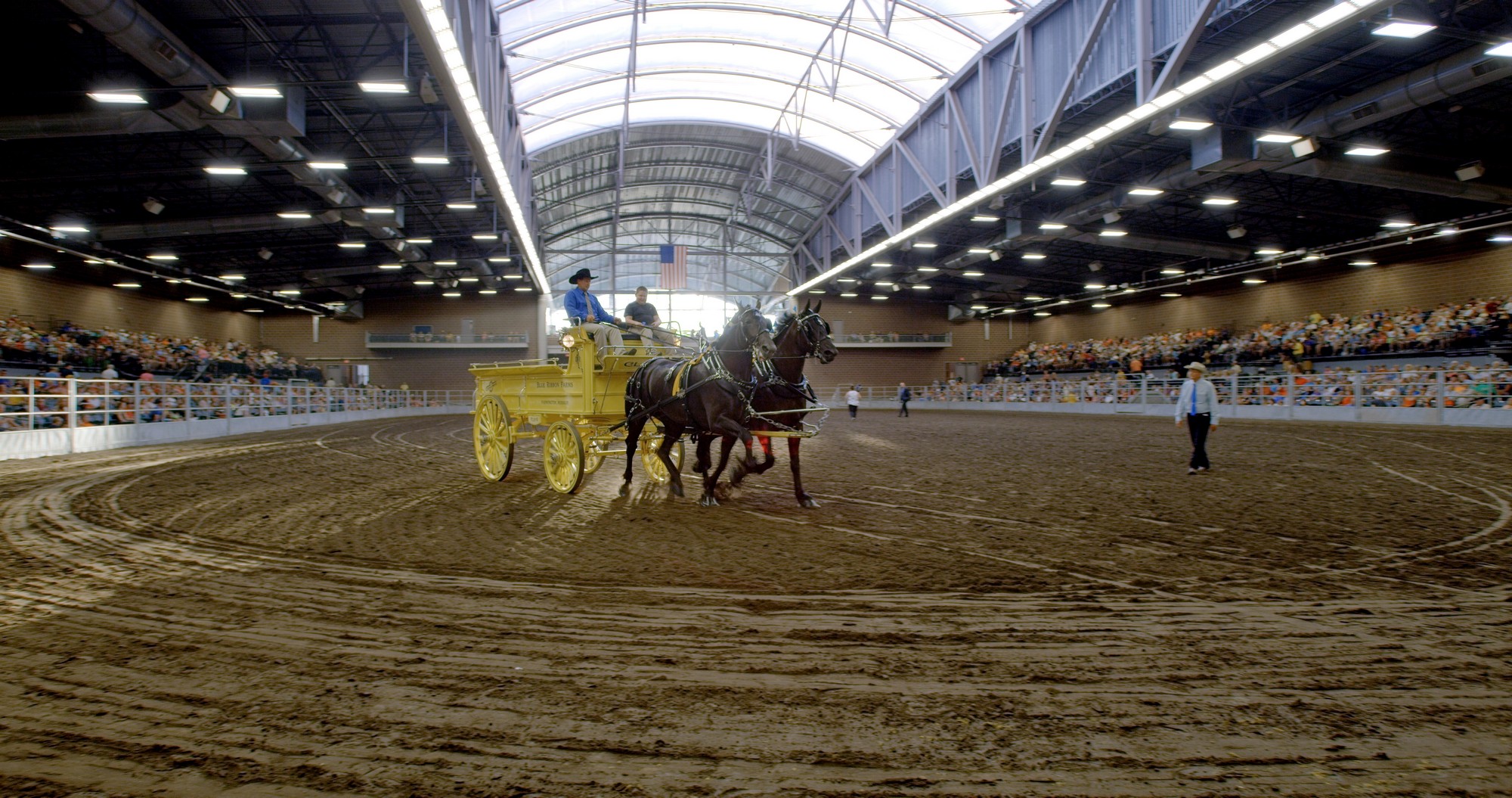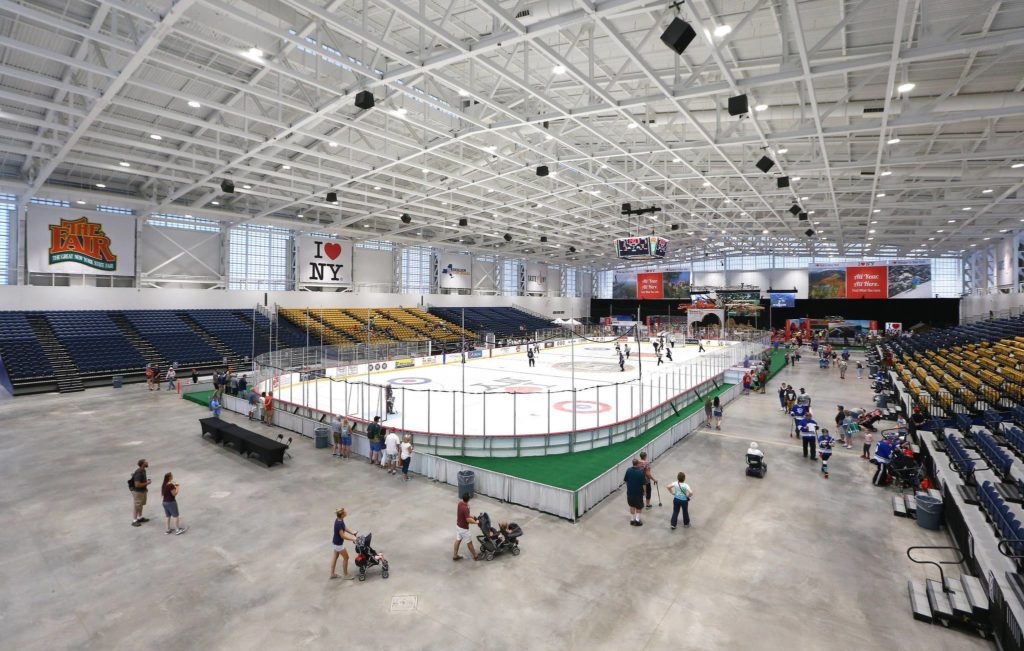
Pros and Cons of Dirt Flooring in Arena Architecture
There’s nothing better than attending a great concert. You can hang out with your friends and sing along to your favorite songs. However, there’s one element lurking below you that you might not be thinking of – the flooring. Depending on the venue you might be standing on dirt, or you might be standing on concrete, or quite possibly a hybrid of layers. Chances are, if it is a contemporary facility in an urban setting, it’s concrete; but if it’s a multi-purpose center on a rural fairground or a venue that hosts livestock shows it very likely might be dirt or at least dirt that is covered over. So, if you’re the owner or operator of one of these buildings – what’s the best solution? Architects like us at Keffer/Overton (KO Architects) can talk you through the various flooring options and the reasons for each. This article will overview the pros and cons of dirt flooring in arena architecture… so read on if you want the inside “scoop”!

Exposition Center New York State Fair – Flexible use facilities might have dirt arenas for events on one day and then changed out the next day to any number of uses or an ice arena like in this building
Pros
Let’s review the benefits of dirt flooring.
Initial Cost
Dirt only flooring is by far the most economical first cost choice over any other flooring type or installing concrete. We have designed buildings that essentially do not provide anything special – the dirt that remains after construction is the same dirt that remains in the building. This is least cost option hands down. Some arenas have a particular blend of footing (special riding surface dirt that sits on the top 4 or so inches of the floor) that is required for various types of livestock events. If this is your case, you can expect to spend a bit more for your dirt flooring. Other elements that start to increase the costs and complexity of dirt floor buildings are things such as: adding drainage, water, or power, in the floor. Dirt floors sometimes require mechanical ventilation (because when dirt is inside of a building, things can get humid and dusty and proper ventilation is important).
Green Design
What is greener than not expending any energy to create your floor. This is the ultimate green design tactic, use a material that is readily available on site and better yet a material that uses no energy to produce.
Flexibility
Concrete floors are permanent. Dirt floors are multi-use one day you can have a livestock event and the next day (with a little grading) you could have a monster truck show. Then on the weekend you could flatten the floor back out and have a circus. For Arena owners who want sustainability, flexibility but have a tight budget should dirt floors are the answer. Keep in mind, dirt flooring if prepared properly could be the first step that allows for a future phased concrete floor to be added later.
Cons
Now that we’ve discussed the best reasons for considering dirt flooring, let’s examine the downside as to why it might not be the best choice.
Replacement
Perhaps one of the most significant disadvantages of a dirt floor is that you must periodically freshen it up. Especially dirt floors used in animal facilities – the musty humid ammonia smell eventually becomes overwhelming. The best way to remedy this is to remove the top 8-10 inches or so of dirt down to the sub-grade. Then replace the removed dirt with the same removed blend. Other reasons for replacement might include the topping blend becoming overworked and mixing with the sub-grade or base dirt. This creates an undesirable dirt surface for certain livestock events. Specialty blends might also deteriorate or crush over time and become unusable for certain types of equestrian shows. Over time the special top footing surface slowly disappears from the facility through routine upkeep and periodic cleaning activities. You’ll have better control of dirt material placed on a concrete floor as it is stored and protected when only concrete is used. Thus, dirt material used in concrete floor buildings has a longer life than dirt used in buildings that do not have a concrete floor.
It’s Messy
Another con of dirt flooring is that it’s messy. Think about it—thousands of people stand around in an arena event, pushing the dirt beneath their feet. The material will rarely stay even and will constantly need maintaining to keep a level surface. The generation of dust is another concern. Dust is easier to control in a facility that is partially dirt and can periodically receive a deep cleaning. Most dirt only facilities never get fully scrubbed. Over time, dust gets on the walls, in the lights, and is hard on HVAC equipment. Other flooring options require much less maintenance.
It’s crucial to understand the pros and cons of dirt flooring in arena architecture before committing to a direction. This thorough guide has provided information that’ll help you make the right choice. No matter what you choose, consider calling the team at K/O (KO), the best Fairground Facility Architects. Not only are we fairground designers and planners, we’re one of the best architecture firms in Des Moines, and we’ll make sure you make the correct informed decision in regard to your facilities.


